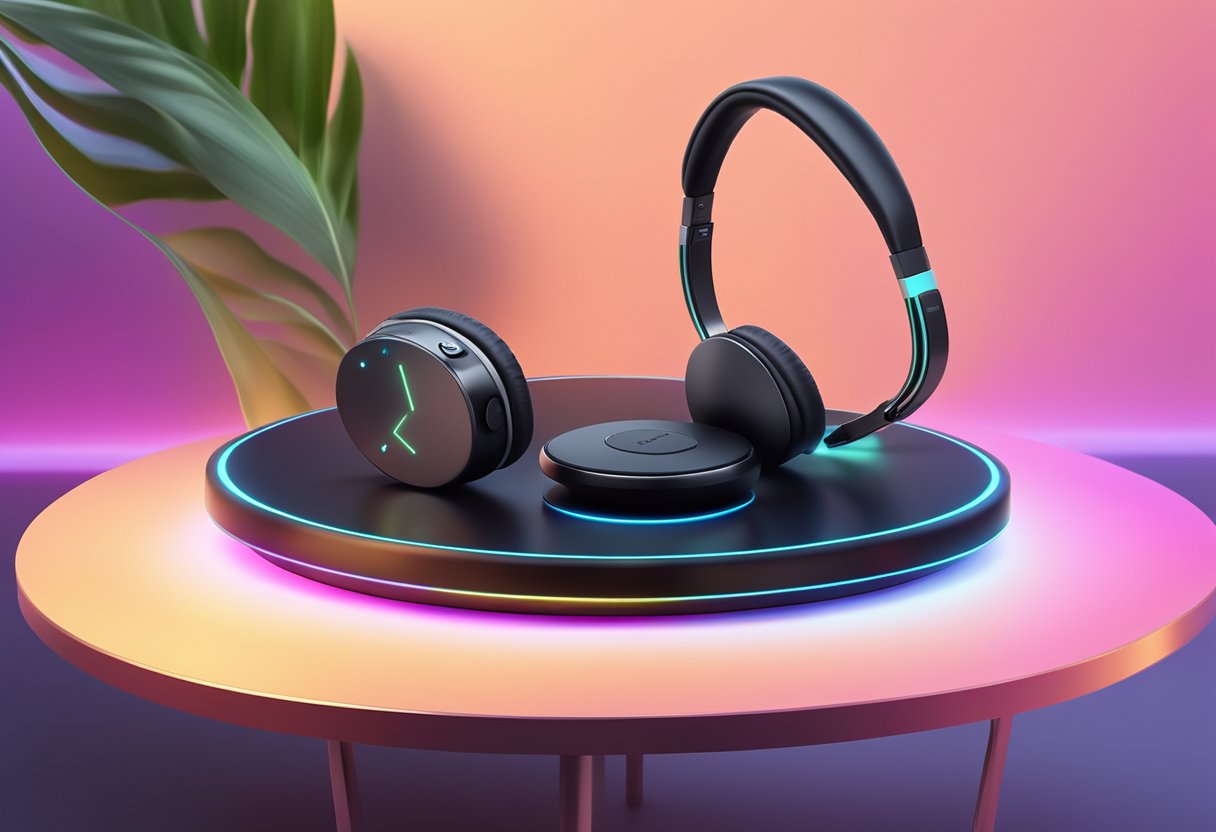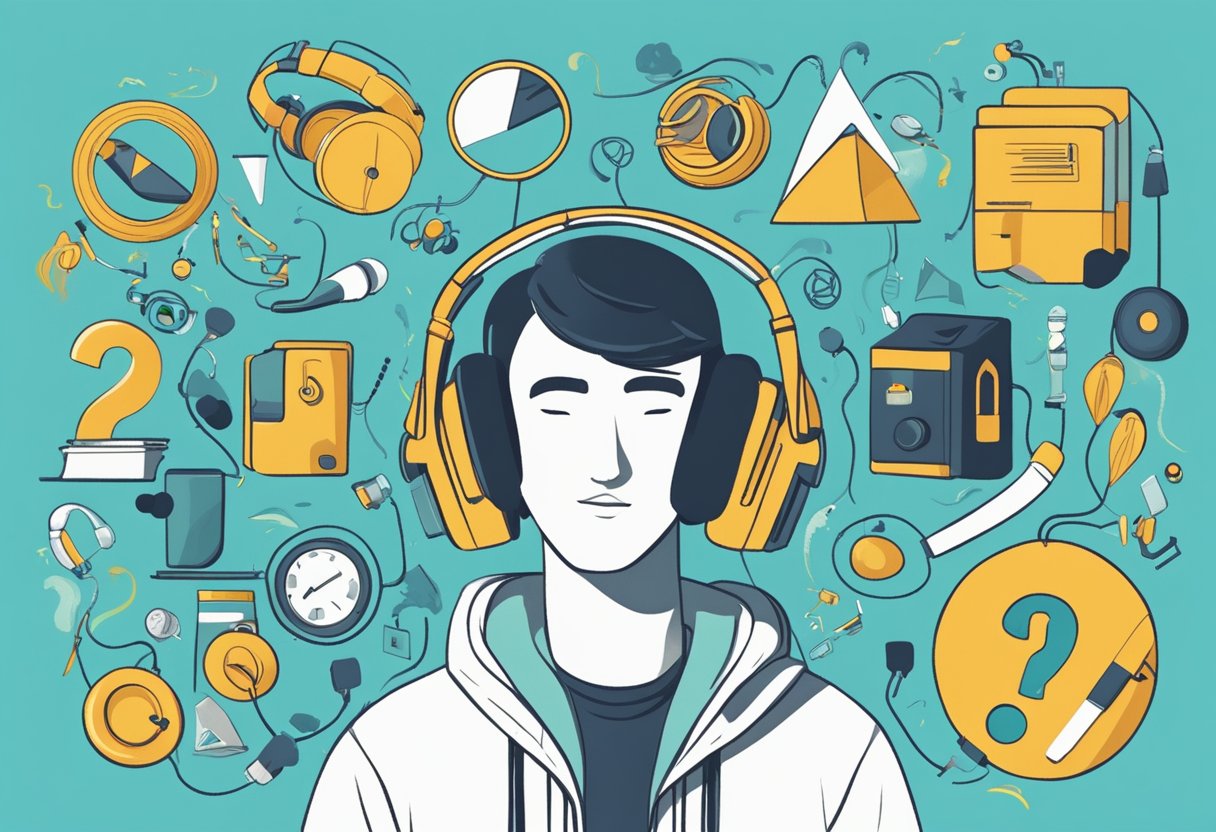Best Noise-Canceling Headphones: Top Picks for Ultimate Sound Isolation
Finding tranquility in a noisy world can be challenging. The best noise-canceling headphones effectively block out unwanted sounds, allowing users to enjoy their music, focus on work, or simply relax. With leading brands like Bose and Sony toping the lists, selecting the right pair involves considering factors like sound quality, comfort, and battery life.

As technology advances, noise-canceling headphones have become more sophisticated, offering features that enhance the listening experience. By understanding these technologies, consumers can make informed choices to meet their specific needs. Whether commuting, studying, or just unwinding, investing in quality headphones can transform the way one interacts with sound.
Exploring the latest offerings in noise-canceling headphones will help identify the best options on the market. With a blend of expert reviews and user experiences, this guide aims to simplify the decision-making process.
Key Takeaways
- The best noise-canceling headphones enhance audio experiences by blocking out background noise.
- Key factors in choosing headphones include sound quality, comfort, and battery life.
- Leading brands provide a range of options to meet different user needs and preferences.
Understanding Noise Cancellation Technology
Noise cancellation technology helps reduce unwanted ambient sounds. It mainly relies on Active Noise Cancellation (ANC), Passive Noise Isolation, and Adaptive Noise Cancellation. Each method has its strengths and applications, making it important for users to understand how they work.
Active Noise Cancellation (ANC)
Active Noise Cancellation uses microphones to pick up outside sounds. The headphones then create sound waves that are opposite to the incoming noise. This method effectively cancels out consistent sounds like engines or air conditioning.
ANC headphones can design sound waves in real-time. This allows them to adapt to different environments. It is particularly useful for travelers who want to enjoy music or podcasts without distractions. Some users may experience a sensation known as “eardrum suck,” which is related to how ANC changes air pressure.
Passive Noise Isolation
Passive Noise Isolation is a simpler method. It relies on the physical structure of the headphones to block sound. This can be achieved through padded ear cups or tightly fitting in-ear designs.
These headphones do not require batteries or electronics. They work by forming a seal around the ears, preventing outside noise from entering. While effective for many scenarios, they may not block out all types of sound, such as louder traffic or crowds.
Adaptive Noise Cancellation
Adaptive Noise Cancellation takes the concept of ANC a step further. This technology adjusts the level of noise cancellation based on the environment. For example, it can increase noise cancellation when a user is in a loud area.
Some adaptive systems allow users to customize settings through an app. This feature makes it easier to balance noise reduction with awareness of surroundings. It is particularly beneficial for those commuting or engaging in outdoor activities where situational awareness is important.
By understanding these differences, users can choose headphones that best suit their needs. Noise cancellation technology continues to evolve, providing better sound experiences for everyone.
Top Noise-Canceling Headphone Brands
Several brands stand out in the noise-canceling headphone market. These companies are known for their quality, features, and sound performance. Below are key details about some of the top brands.
Bose
Bose is well-regarded for its noise-canceling technology. The Bose Noise Cancelling Headphones 700 are among its best products. They offer excellent sound quality and comfortable wear for long listening sessions.
Bose headphones feature an adjustable noise-canceling function. This allows users to control how much external noise they want to let in. Their design is sleek and modern, appealing to a wide range of consumers.
Bose also focuses on the microphone quality in their headphones. This makes them suitable for calls and video conferencing, enhancing the listening experience.
Sony
Sony has a strong reputation for producing high-quality audio devices. The Sony WH-1000XM4 and Sony WH-1000XM5 are popular choices in the noise-canceling market. These models are known for their advanced features and exceptional sound.
The WH-1000XM4 includes Adaptive Sound Control, which automatically adjusts sound settings based on the user’s activity. The WH-1000XM5 improves on this with even better noise cancellation and comfort.
Sony’s headphones also come with a long battery life, allowing for hours of uninterrupted play. Their sound profile is customizable, enabling users to fine-tune their listening experience.
Sennheiser
Sennheiser is another leading brand in the audio world. Their Momentum 4 Wireless headphones stand out for their impressive sound fidelity and noise cancellation capabilities.
Sennheiser focuses on delivering a balanced audio experience. This makes their headphones ideal for audiophiles and casual listeners alike. The Momentum 4 is designed for all-day comfort, making it easy to wear for longer periods.
These headphones often include smart features like touch controls and voice assistant compatibility. Sennheiser has built a reputation for durability and performance, ensuring a reliable choice for consumers.
Apple
Apple has made a significant impact in the headphone market with its AirPods Max. These headphones combine high-quality sound with effective noise cancellation.
The AirPods Max feature a premium build quality and a comfortable fit. They are designed to work seamlessly with Apple devices, providing a user-friendly experience.
Apple’s headphones come with features like spatial audio and dynamic head tracking. This offers an immersive listening experience for music and movies. The design is sleek and modern, aligning well with Apple’s overall aesthetic.
Headphone Design and Comfort
When selecting noise-canceling headphones, design and comfort are key factors. The type of headphone, the materials used, and how pressure is distributed can greatly affect the listening experience.
On-Ear vs Over-Ear
On-ear headphones sit directly on the ears, while over-ear headphones encompass the entire ear. Over-ear headphones generally offer better comfort for long listening sessions due to their larger ear cups and extra padding. They create a full seal, enhancing noise cancellation and sound quality. On-ear models are often lighter and more portable but may cause discomfort over time, as they can apply pressure directly to the ears. Users who enjoy long hours of use should consider over-ear options for superior comfort.
Material and Build
The materials used in headphone construction can significantly affect comfort. Soft memory foam padding is common in premium models, providing a snug fit without excessive pressure. Headbands made from lightweight materials help reduce strain during long sessions. Metal frames may offer more durability, while plastic frames can keep weight down. Breathable fabrics can also enhance comfort by reducing heat buildup during extended use. Ultimately, quality materials contribute to both the physical feel and performance of the headphones.
Weight and Pressure Distribution
Weight plays an important role in comfort. Heavier headphones may provide better sound quality but can lead to fatigue during prolonged wear. Proper pressure distribution is crucial for comfort. Headphones with adjustable headbands and evenly distributed ear cups can minimize discomfort. Wearing headphones that are too tight can lead to soreness, while looser options may not provide adequate noise isolation. For the best experience, it is important to find a balance between weight and snugness in the fit.
Sound Quality and Audio Performance
The sound quality and audio performance of noise-canceling headphones are crucial for an enjoyable listening experience. Key factors include the audio profiles, drivers, and support for high-resolution audio formats.
Audio Profiles and Drivers
Noise-canceling headphones offer various audio profiles to cater to different listening preferences. Some models focus on balanced sound, while others emphasize powerful bass or enhanced treble.
Drivers play a significant role in shaping these audio profiles. Larger drivers typically produce richer sound and more impactful bass. For instance, headphones like the Sony WH-1000XM5 feature advanced 40mm drivers that deliver immersive audio.
Users might also appreciate spatial audio capabilities, which provide a surround sound experience. This feature adds depth to music and makes it feel more dynamic. The right combination of drivers and profiles can elevate the listening experience to a high-end audio level.
High-Resolution Audio Support
High-resolution audio support is an essential feature for audiophiles. Many modern headphones can handle high-resolution formats, which offer better sound quality than standard audio files.
For example, headphones that support DSEE Extreme technology enhance audio quality by upscaling compressed music. This results in clearer highs and improved overall sound fidelity.
Some models also enable 360 Reality Audio, immersing users in a three-dimensional sound stage. This technology allows listeners to feel as if they are in a live concert, where sounds come from all directions.
Choosing headphones with strong high-resolution audio support ensures a more engaging listening experience.
Battery Life and Charging

Battery life and charging capabilities are crucial factors when selecting noise-canceling headphones. Users want headphones that last through long journeys or work sessions without constant recharging. Additionally, quick charging features can enhance usability, making them convenient for everyday use.
Battery Longevity
Battery life varies significantly among noise-canceling headphones. Many models offer impressive longevity, with some like the Bose QuietComfort Ultra Headphones providing over 40 hours of playtime on a single charge. This makes them ideal for long flights or daily commutes.
Typically, average wireless noise-canceling headphones range from 20 to 30 hours of battery life. Users should consider their usage patterns to choose a model that meets their needs. Notably, while earbuds often have shorter battery life, options like the Sony WF-1000XM5 still manage a solid performance.
Quick Charging and Battery Features
Many noise-canceling headphones come equipped with a quick charge feature. This allows users to get several hours of playback from just a short charging session. For instance, a 10-minute charge can provide up to 5 hours of listening time.
Battery features can also include customizable settings that help extend battery life. Some headphones offer a charging case, which keeps earbuds charged on the go. Brands like Soundcore have designed their cases to maximize both portability and efficiency. Keeping an eye on these features can significantly enhance the user experience.
Connectivity and Features
Connectivity and features play a crucial role in selecting the best noise-canceling headphones. Buyers should pay attention to Bluetooth technology, multipoint connectivity, and smart features for a better listening experience.
Bluetooth and Wireless Technology
Most modern noise-canceling headphones use Bluetooth technology for wireless connectivity. Bluetooth offers a reliable and stable connection, allowing users to enjoy their favorite music without wires. Many models support advanced Bluetooth codecs, such as aptX and AAC, which enhance audio quality during playback.
When choosing wireless headphones, it’s essential to consider the Bluetooth version. Newer versions, like Bluetooth 5.0, provide better range and battery efficiency compared to previous versions. This means users can move freely without losing connection, making it an excellent choice for active lifestyles.
Multipoint Connectivity
Multipoint connectivity allows headphones to connect to two devices simultaneously. This feature is incredibly useful for users who want to switch between devices without needing to disconnect and reconnect.
For instance, someone can connect their headphones to both a smartphone and a laptop. They can take a call on the phone while listening to music from the laptop. This seamless transition enhances convenience, especially for busy professionals and multitaskers.
Not all headphones offer multipoint pairing, so checking specifications is important. This feature makes daily tasks easier and helps maintain focus.
Smart Features and Voice Control
Many noise-canceling headphones come with smart features that enhance usability. One popular feature is voice control compatibility, allowing users to interact with their devices hands-free.
Headphones may support voice assistants like Google Assistant or Amazon Alexa. Users can issue commands or ask questions without touching their devices, adding to overall convenience. This is especially beneficial for Android users who rely on Google services.
Additionally, some models include customizable touch controls for playback and noise cancellation adjustments. These features make operating headphones more intuitive, allowing users to tailor their experience to their preferences.
Additional Functionalities
Many noise-canceling headphones offer features beyond sound cancellation. These additional functionalities can enhance the listening experience and provide more convenience for users.
Transparency and Ambient Modes
Transparency mode allows users to hear their surroundings without removing the headphones. This feature is useful in situations where awareness is important, like when crossing streets or chatting with others.
Ambient noise and hear-through mode are similar, letting in external sounds while maintaining some noise cancellation. For example, some models automatically adjust based on the noise level around the user. This can be beneficial in busy environments or quiet settings.
Headphones with these modes often come equipped with advanced microphones that pick up external sounds clearly. Users can also find features like speak-to-chat, which pauses playback when the user speaks, offering a seamless listening experience.
Touch Controls and Gestures
Touch controls are becoming standard in many modern headphones. Users can play, pause, or skip tracks with a simple tap or swipe on the ear cups.
These controls allow for hands-free use, making it easier to manage music or phone calls while on the go. Some models feature gestures like double-tapping to access the voice assistant or adjusting volume by sliding a finger.
Easy chat functionality often incorporates these touch controls, allowing for quick responses to incoming calls without needing to reach for a device. The intuitive nature of these controls improves the overall user experience.
Durability and Resistance
Durability is an important consideration for headphones. Many premium models are designed to be water-resistant, making them suitable for exercise or daily activities.
Materials used in the construction often include reinforced plastics and moisture-wicking headbands. This ensures the headphones can withstand sweat and light rain.
Additionally, some headphones offer better impact resistance, which protects them during travel. Users can look for ratings such as IPX4 or higher, indicating suitable water-resistance levels. This feature enhances the headphones’ longevity and usability across various settings.
User Experience
The user experience with noise-canceling headphones is shaped by various factors, including call and microphone quality, comfort, and available customization options. Each of these aspects plays a crucial role in ensuring a satisfying listening experience.
Call and Microphone Quality
Call quality is essential when using headphones for voice communication. Many models, such as the Bose Noise Cancelling Headphones 700, feature advanced microphone technology. This ensures clear audio during calls, even in noisy environments.
Users of the Sony WF-1000XM5 report excellent microphone performance, which captures voices clearly while minimizing background noise. The Samsung Galaxy Buds 2 Pro also excel in this area, using innovative tech like aptX Adaptive for better audio conferencing.
A good microphone improves communication, making it easier for all parties to understand each other during calls.
Ease of Use and Comfort
Comfort is a vital factor in the overall user experience. Headphones with a lightweight design, such as the Bose QuietComfort Ultra, allow for long use without fatigue. The ear cups of these models are often padded with soft materials, enhancing comfort.
Models like the Soundcore Space offer foldable designs, ideal for travel and daily use. Adaptive features, such as Quick Attention Mode, enable users to engage with the outside world without removing the headphones. This is particularly handy in social situations.
The right fit also contributes to effective noise cancellation, benefiting users who seek a peaceful listening environment.
Customization and Accessibility
Customization features make noise-canceling headphones more user-friendly. Many brands offer EQ settings that allow users to adjust sound profiles according to personal preferences. The Sony WH-1000XM5 stands out with this feature, providing adaptable EQ options for different genres.
Accessibility plays a role as well, with some headphones integrating various modes like ambient sound and noise cancellation. This versatility caters to diverse environments, allowing users to manage noise levels based on their needs.
These customization features enhance the listening experience, making headphones suitable for different activities and settings.
Choosing the Right Noise-Canceling Headphones
Selecting the right noise-canceling headphones involves considering how they will be used, the price range, and personal taste in brands and design. Understanding these factors can help narrow down the choices effectively.
Considering the Use Case
Different headphones suit different environments. For travel, Bose QuietComfort Ultra and Sony WH-1000XM5 are top choices due to their excellent active noise cancellation (ANC) and comfort.
If someone needs headphones for exercise, models like the Beats Fit Pro or Jabra Elite 10 Gen 2 offer a secure fit and sweat resistance.
Audiophiles should look at Focal Bathys or Shure Aonic 50 for superior sound quality and a more immersive experience.
Budget shoppers may find the Soundcore Space A40 or Bose QuietComfort 45 appealing. Each model best fits specific needs, making this decision crucial.
Price and Value
Price is a significant factor when choosing noise-canceling headphones. Premium models like the Bowers & Wilkins PX7 S2e may offer superior sound and build quality but come at high costs.
Mid-range options like the JBL Tour One M2 and Technics EAH-AZ80 provide solid performance without breaking the bank.
There are also budget-friendly headphones, such as the Soundcore Space A40, which deliver decent ANC features for a low price. Setting a budget helps potential buyers find the best value for their needs.
Brand and Aesthetic Preferences
Brand loyalty often influences headphone choice. Brands like Bose and Sony are recognized for their reliability and advanced technology.
Aesthetic preferences also play a role. The sophisticated design of audiophile headphones like the Dali IO-8 appeals to some users.
Others may prefer the sporty look of Jabra or Beats models, which fit active lifestyles. It’s important to select a pair that matches personal style as well as functionality.
Frequently Asked Questions

This section answers common questions about noise-canceling headphones. It covers top-rated options, effectiveness of earbuds versus over-ear models, essential features, budget-friendly choices, recommendations for work, and comparisons between high-end and mid-range headphones.
What are the top-rated noise-canceling headphones currently on the market?
Some of the best noise-canceling headphones include the Sony WH-1000XM4 and Bose 700 Headphones. These models are praised for their sound quality and ability to block out noise effectively. The Apple AirPods Max is also a popular choice, known for its exceptional noise cancellation.
How do noise-canceling earbuds compare to over-ear headphones in terms of effectiveness?
Noise-canceling over-ear headphones generally provide better noise isolation due to their larger ear cups that cover the ears completely. Earbuds can be effective but may not block out as much sound, especially lower frequencies. The choice often depends on personal comfort and usage scenarios.
What features should I look for in headphones for the best noise cancellation experience?
Look for features like adaptive noise cancellation, adjustable settings, and a comfortable fit. Good battery life is also important, as effective noise cancellation can drain batteries quickly. Some models offer customizable sound profiles to enhance the listening experience further.
Can you recommend budget-friendly noise-canceling headphones that offer good value?
Several budget-friendly options provide solid noise cancellation. Brands like Anker and TaoTronics offer headphones that are affordable and surprisingly effective. These brands often deliver good performance without the high price tag found in premium models.
What are the best choices for noise-canceling headphones with a built-in microphone for work?
For work, models like the Bose 700 and Apple AirPods Max stand out. These headphones offer excellent microphone quality, making them suitable for calls and video meetings. Their noise-canceling features help minimize background noise during conversations.
Are high-end noise-canceling headphones significantly better than mid-range ones?
High-end noise-canceling headphones often offer superior sound quality and more advanced features, such as better noise cancellation technology. However, many mid-range options also perform well and can meet the needs of most users. The choice depends on individual preferences and budget constraints.






Post Comment